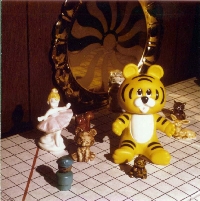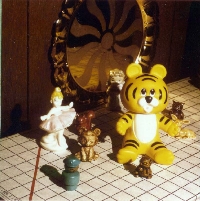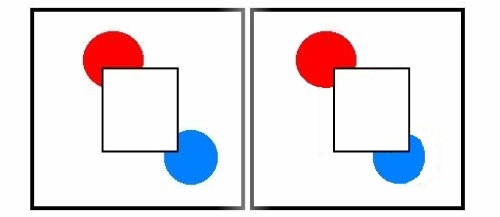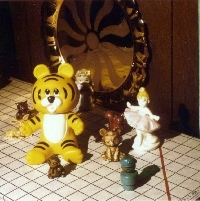

I


I I



I I

 ...............
...............





|
Stereo Photography This site has stereo pairs displayed at three different sizes and for both 'cross-eyed' and straight viewing. There are test images (cicles in a square) for practice and selection of the best size and viewing technique. After determinig the best view, click the label to view the set at that size and view. Stereo Photography This site seems to have the best stereo pairs for 'cross-eyed' viewing. The selection is very good also. 3-D Photography This site is the most comprehensive site that I found during my search. Stereo Photography Page This site has a humorous take on stereo photography. Great writing! And I finally noticed the 'animated gif' 3-D image at the top of the page, but it doesn't have a 3-D look to me. Torrey Nelson's Stereo Photography Page This site has stereo pairs that seem to have been made by the mirror attachment I mentioned in my text. The results are pretty good, but having the 'side' images so close is a little distracting. Slidebar Stereo Photography This site displays some great stereo pairs for cross-eyed viewing. (Since I've looked more closely, I think some are displayed for straight viewing.) The slidebar is what I used for the pair on my page. You should be good at cross-eyed viewing before trying these, because they are displayed at full screen width. |
|
Pinhole Photography - An old pinhole photograph is compared to a modern 35mm photo of the re-created scene with an explanation of the process for making a large-format pinhole photograph using photo enlarging paper. Photographic Perspective - Our experience with photography gives us the impression that the focal length of the lens will create a particular perspective in the resulting photograph. However, the photos shown here illustrate that it is camera-to-subject distance, not lens focal length that makes the difference. Stereo Photography - A stereo photo pair is displayed with instruction for viewing in 3-D by the "cross-eyed" technique. There is also a brief account of my experience with stereo photo systems and links to several excellent and comprehensive sites on stereo photography. Film Resolution - A portrait of a young woman and enlargements of her eyes demonstrate the degree of resolution I was able to obtain with B&W 35mm film. Bridal Portrait - A portrait of a young bride and enlargements of her eyes demonstrate the degree of resolution achieved with 35mm colorprint film. |
| SITE INDEX |
| VIEW OR SIGN MY GUESTBOOK |